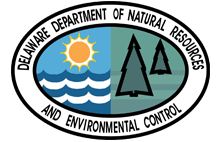 The Delaware Nonpoint Source Program administers a competitive grant program made possible through Section 319 of the Clean Water Act. The grant provides funding for projects designed to reduce nonpoint source (NPS) pollution in Delaware.
The Delaware Nonpoint Source Program administers a competitive grant program made possible through Section 319 of the Clean Water Act. The grant provides funding for projects designed to reduce nonpoint source (NPS) pollution in Delaware.
Nonpoint source pollution is any pollution that originates from a diffuse source (such as an open field or a road) and is transported to surface or ground waters through leaching or runoff.
A good way to reduce nonpoint source pollution is to incorporate specific best management practices (BMPs) into project workplans. Projects may target any source of NPS pollution, but most frequently involve agriculture, silviculture, construction, marinas, septic systems, and hydromodification activities.
Clean Water Act (CWA) Section 319 grants are awarded to the state based on the federal fiscal year (October through September). A request for proposals for each awarded fiscal year grant is posted, and advertised, in December of each calendar year and/or at the NPS Program’s discretion.
Eligibility
Project can be sponsored by public or private entities, including local governments, tribal authorities, cities, counties, regional development centers, local school systems, colleges and universities, local nonprofit organizations, state agencies, federal agencies, watershed groups, for-profit groups, and individuals. Project grants to individuals are limited to demonstration projects.
Priority will be given to those projects whose goal is to improve the water quality of water bodies identified as having nonpoint source pollution impairments and implemented in those watersheds that have approved watershed management plans.
Funding Process
Proposals are reviewed and evaluated, and those which are determined to meet specific requirements are eligible for funding. All projects must include matching funding from a non-Federal source totaling at least 67% of the federal grant funds requested.
Tips for Writing an Effective Grant Proposal
Clearly identify the water quality problem that your project seeks to address. Connect this problem with an established TMDL, Tributary Strategy or 303d listing. Include any studies, reports or monitoring data that support your description of the specific water body and pollutant(s) that you plan to address with your project.
Show how your project is a cost-effective and appropriate solution to the problem. Reference local studies and reports if possible.
Have a workable, thorough implementation plan:
- Clearly identify the goal that will be accomplished through the implementation of your project. Is it water quality? Load reduction? BMP Implementation? Education?
- Draw a list of all the tasks necessary to reach your goal.
- Establish a realistic timetable for accomplishing project tasks.
- Make sure your budget is reasonable for all of the tasks in your proposal. Provide enough description to clearly justify your expenses.
For BMP implementation projects, identify specific sites for the project. If your project has already established landowner cooperation, completed BMP design work and gotten the necessary survey work and permit applications underway, so much the better.
Create a list of Measurable Environmental Results (MER) appropriate to your project. Use the guidelines and tools described under the MER section of this website.
For BMP implementation projects, describe the type and extent of controls that will be used to address the issue, such as miles of stream restoration, acres of wetland created, number of acres planted in cover crop, etc. Calculate the load reductions achieved as a result of implementing the BMPs.
For educational projects, describe the number of people that received brochures, responded to surveys, attended events, etc.
Click Here for More Information
